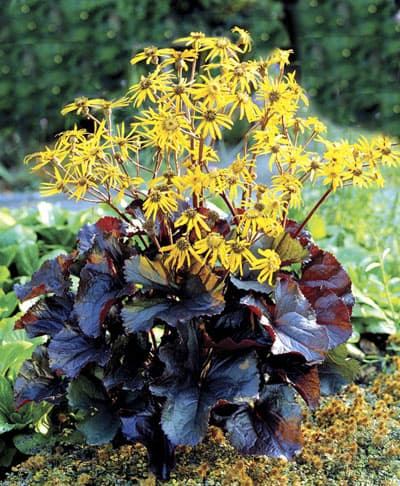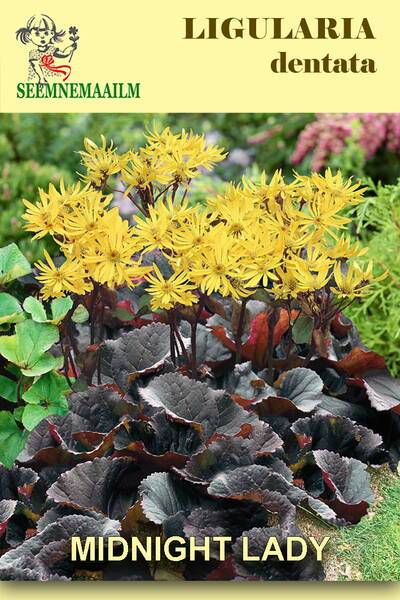An unpretentious, shade-tolerant and frost-resistant decorative deciduous perennial from the Asteraceae family.
Flower colour: golden yellow.
Natural flowering period: July - September.
Winter hardiness zones: Z3 – Z8.
Foliage: Purple-bronze in summer and almost black-purple in spring.
Flowering plant height: 100 cm.
Distance between plants: 75 cm.
Soil requirements: moist, fertile, rich in humus.
Use: suitable for decorating the shore of a reservoir and for cutting.

This Ligularia's leaves are so good that it can successfully replace many ornamental shrubs in your garden.
Since the plant looks not only decorative, but also majestic, it can be used as the compositional center of a flower garden. Ligularia prefers damp places and is best planted along the coastline. The plant is irreplaceable in a shady corner of the garden due to its unpretentiousness. And the contrast of huge leaves and large inflorescences that appear in August - September creates a picturesque picture.
Agricultural technology: sowing - in the ground in April-May to a depth of 1 cm. 1.0 g = 90 seeds.
The plant prefers shade and fertile, moist soil. It should not be planted in windy areas.
Further care consists of timely watering and fertilizing. It can grow in one place for 15-20 years without transplanting.
Location: ligularia are shade-tolerant and moisture-loving plants; in the garden they develop better in partial shade, although with abundant and regular watering they feel good in the sun.
Soil: requires nutrient-rich, moist soil. They also grow on heavy, undrained clay soils and tolerate temporary flooding.
Care: in the spring, it is advisable to loosen and mulch the soil. In summer, care comes down to regular watering and tying up the inflorescences. If the plants are planted on fertile soil, then they do not need to be fed. After flowering, the inflorescences are removed (if seeds are not needed), while the plants increase the size and number of leaves, maintaining a decorative effect until mid-October. It is better to cut off the above-ground part in the fall. In winter, it is advisable to mulch the soil around the plants. In open areas, additional watering is necessary on hot days.
Ligularias are not affected by pests and diseases. The only pest is slugs, which eat young and even adult leathery leaves.
Plants overwinter without shelter.
Bot. syn.: Ligularia clivorum Maxim.












